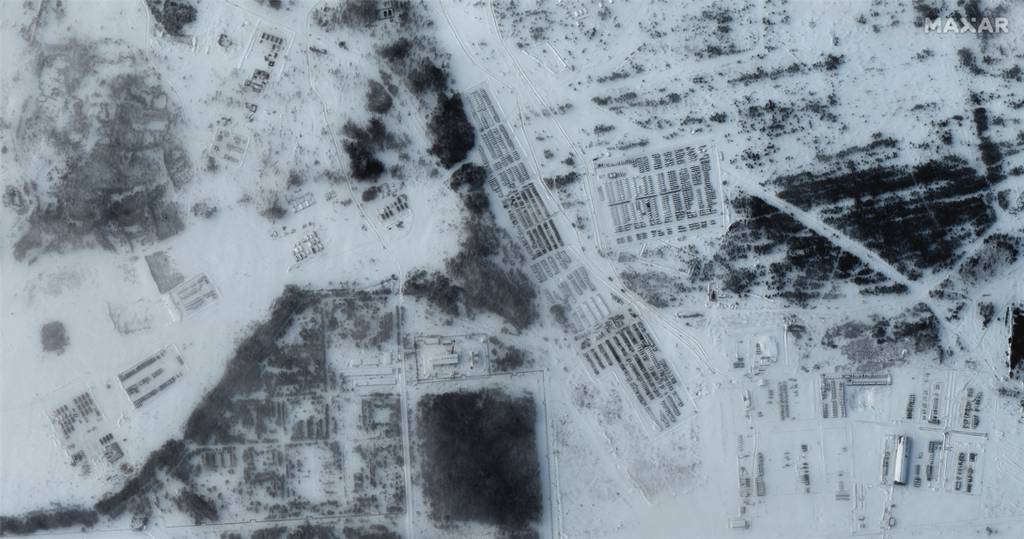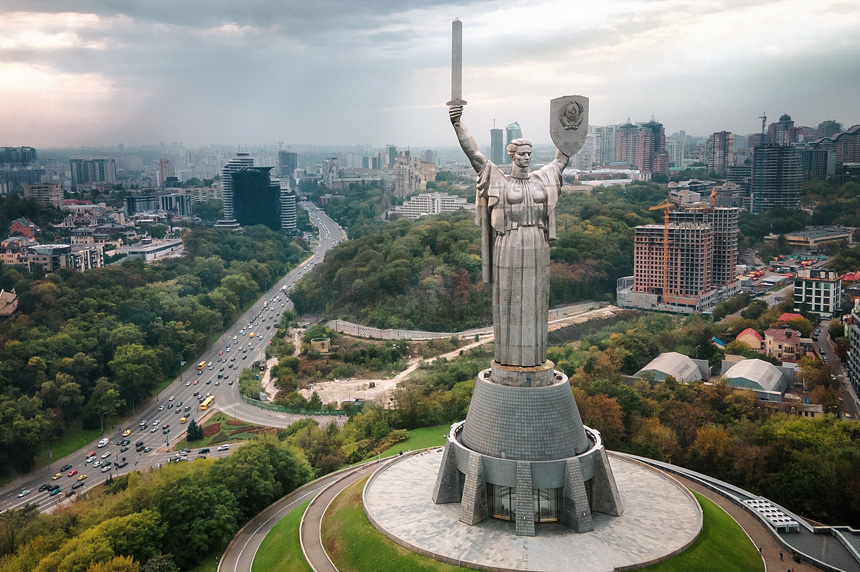Social media has become a key source of information for OSINT investigators and is proving critical to understanding the Russia-Ukraine tensions.
Governments, regimes and the traditional news media put out information that spins their position. Whether in a positive light, half-truths or blatant lies, the phenomenon can be observed all over the world. Sometimes open source intelligence (OSINT) research requires going beyond the headlines to find out what is happening on the ground.
The integration of social media into our daily lives has created a treasure trove of ground truth information. A topical example of this trend can be seen in the Russia-Ukraine tensions. State-run media strategically leaks the whereabouts and strategies of the Russian military, but everyday citizens are reporting movements of military equipment and troops on TikTok, Twitter and other social media sites. This information can be used by researchers to help corroborate or disprove statements from official sources and have a better lead on what to expect when negotiating.
The rise of social media
According to DataReportal's October 2021 report, there are approximately 7.89 billion people in the world and roughly 4.55 billion active social media accounts. Also covered in the report, an average of 6.7 social media platforms are used each month per internet-user spending an average of two hours and 27 minutes on social media each day. These numbers show the prevalence of social media throughout the world and how integrated these platforms are in our day-to-day lives. The prevalence of cameras and video on mobile devices has accelerated this interconnectivity. What happens in our day, from the meals we eat to the wars we fight, are captured on social media and available for others to see.
This source of information has tremendous power for OSINT researchers, especially in times of world crisis when nation-states are preparing for conflict.
Power of social media
Social media can both reveal truth and breed misinformation. The challenge for OSINT researchers is to bring together disparate pieces of information and assess truth from fiction. Because of the fast and personal nature of social media, it can be our tendency to assume truth in what we see. But a deeper look is required.
Similarly, we also have Babryusk AB, another reserve airfield that #Russia has previously used in air defense exercises with Belarus. Like Luninets, we have an active EW site and a cleared runway. (Imagery: @planet) pic.twitter.com/WTCXpCt9S7
— Chris Biggers (@CSBiggers) January 30, 2022
In July 2014, Malaysian Airlines Flight 17 (MH17) was shot down while flying over eastern Ukraine. Russian sources used propaganda to promote differing accounts of who was responsible for the downed aircraft. Bellingcat, an independent collective of researchers, used OSINT techniques to collect information, including social media posts depicting the incident. These efforts revealed that MH17 was hit by a Russian military surface-to-air missile. The open-source evidence showed that the missile launcher was driven from Russia into Ukraine, then fired a missile hitting MH17. Afterwards, the missile launcher was driven back into Russia.
In October 2020, videos posted by various social media accounts claimed to show missiles being fired as part of the Nagorno-Karabakh conflict between Armenia and Azerbaijan. These posts circulated during a time of cease fire, increasing distrust between the two countries when tensions were supposed to decrease. These videos on social media appeared legitimate enough to be used as footage in news segments by a traditional media outlet in India. OSINT researchers used reverse image analysis to determine that these videos were originally from commercial video games or events showing off Russian military capabilities, and therefore completely unrelated to the Nagorno-Karabakh conflict.
These are only two examples of the power of social media that both illuminate or misinform negotiations during geopolitical events.
Russia’s latest military buildup

Satillite image provides an overview of deployed units in Yelnya, Russia, via Military Times
In October 2021, Russian troops and military equipment began building up in Belarus and Russia along the Ukrainian border.
Traditional western news sources reported on this military escalation using satellite imagery to show equipment being stored in areas of Belarus and Russia close to Ukraine. The imagery has been interpreted by researchers as evidence of Russia’s plans to invade Ukraine.
Simultaneously, Russian state-run news agencies have reported that the increased tensions and military build-up are a response to statements from the United States government about their readiness on behalf of NATO to send troops into the region.
Accounts of increased military build on social media show troop movements across Russia towards Ukraine. Some social media posts are purportedly from family and friends of troops and mention their loved ones deployment orders to Ukraine and Belarus. These social media posts also include both images and videos of troop and equipment convoys.
How reports from the ground are making an impact in real time
Social media can be an excellent source of information for near-real-time reports of current events and the potential to report the ground truth of activities as they occur. This dynamic has been seen in protest movements around the world, such as during the Arab Spring, the military coup in Myanmar and social unrest in the United States, such as the Black Lives Matter protests and the storming of the U.S. Capitol. Posts from participants directly involved in these events provided images, videos, geospatial data and human sentiment that can be used to work towards corroborating or disproving information provided by official sources — independent media outlets, state-run news agencies, official government statements or NGO reports.
The key for citizen and government researchers alike is to remember that social media content should be treated with a degree of skepticism and taken into context with other sources of information, whether open source or not. Before coming to conclusions, researchers need to find multiple, independent sources to corroborate or disprove information. This can be done through investigating a social media account’s post history, the words and phrases used in social media posts, review of content metadata, determining sources of images and videos through reverse image searches or visual analysis of background objects and locations.
There are drawbacks and benefits from using information from unconfirmed sources, such as public social media accounts. It takes more time and information to confirm that the images and videos being seen are trustworthy. However, social media can shine a light into countries with otherwise strictly controlled state media sources and illuminate events that researchers would otherwise be in the dark about. With the discipline and regimen for investigating tips from social media, OSINT researchers can unlock a treasure trove of information at their fingertips.
To learn how to safely leverage social media data in OSINT collection, check out Silo for Research. Silo for Researcher is a managed attribution solution that helps researchers blend in and includes numerous workflow tools, such as Collector and Gofer, to simplify and ease collection from social media sources.
Tags OSINT news Social media

